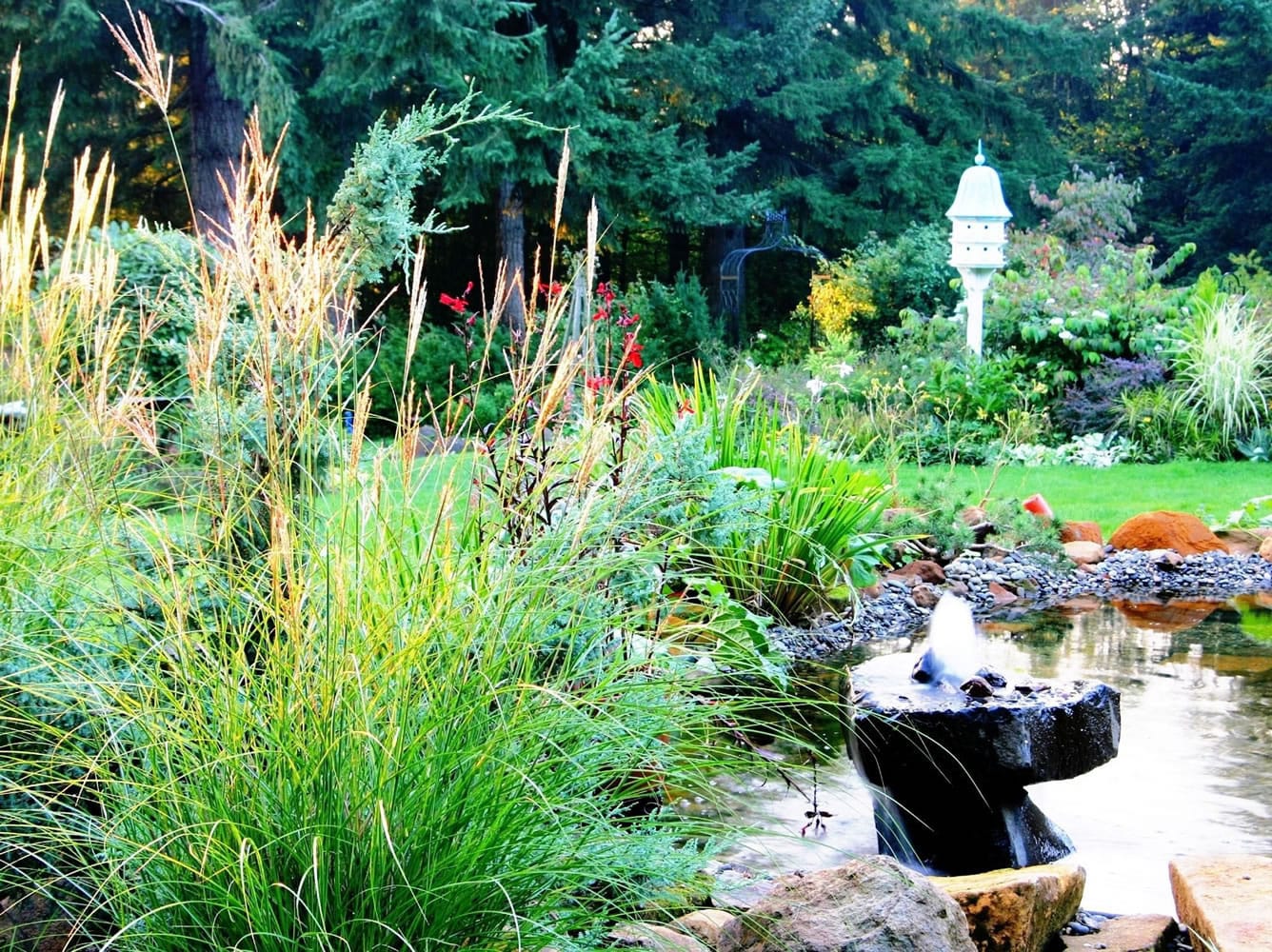As summer wanes and autumn approaches, garden plants begin to change along with the weather.
One of the most fascinating aspects of the fall season is watching the metamorphosis of many structural garden plants. One group of plants that stands out at this time of year is ornamental grasses.
Mature grasses have reached their full height by the end of summer, but it takes the onset of cooler weather to bring out their best qualities. Now the stalks of ornamental grasses begin to color in burnished, autumn hues. Feathery flower spikes rise up above the foliage.
Among the ornamentals called fountain grasses, Pennisetum setaceum “Rubrum,” is a classic for season planters. Red fountain grass is at its best in full sun and average garden soil. The best way to display this beauty is to plant it in a location where the foliage is illuminated from the side or from behind with early morning or late afternoon sun.
The depth of seasonal color lights up ornamental grasses from within in an ever-changing kaleidoscope of rich, rose reds and tawny browns. Red fountain grass is one grass that is difficult to overwinter in our climate, so plants are best treated as annuals and replaced each spring. It is worth the effort.
Once autumn sets in, Pennisetum orientale reaches up and out with feathery plumes of pale pink, displaying longer, purple hairs that glow in the light of the noonday sun. The arching plumes rise well above the neat and attractive clump of dense, light green foliage.
Pennisetum alopecuroides “Hameln” sports the classic fountain shape of the species but in a smaller form. At about 3 feet high and wide, “Hameln” should be planted in sweeps of three or five to best show off the lovely white flower plumes. P. “Little Bunny” is a dwarf form, perfect for the smallest garden.
The group of ornamental grasses classified as Miscanthus is among the showiest. These are clump-forming plants that range in size from 14 feet tall to dwarf varieties measured in inches. Among the characteristics of silver grass are flower panicles that are held above the foliage and open as tassels, gradually expanding with silvery to pinkish-bronze plumes that last well into winter.
Miscanthus “Giganteus,” also called giant silver grass, is one of the most impressive, with self-supporting stems up to 2 inches thick making it a good summer screen or hedge. Miscanthus sinensis “Silver Feather” is a German selection whose large, silver plumes are carried on 7-foot stems above handsomely striped foliage. With the sun behind them, they gleam like polished chrome from mid-August through the winter months.
My current ornamental favorites are the feather reed grasses, Calamagrostis. These sturdy, clumping grasses are Eurasian natives with feathery plumes that fade from purple-green to straw yellow and persist well into winter. Calamagrostis acutiflora “Karl Foerster” stand out with upright flowering stems emerging from bright green leaves in early summer.
Hardy yet graceful
This grass forms neat clumps of foliage and in June, the toasty brown, feather-like flower stems extend the height of the grass to five or more feet, forming a striking exclamation point in the garden. Despite their delicate and graceful appearance, they hold their shape through the winter months.
Perhaps the most amazing trait of the hardy grasses is their ability to spring back after being flattened to the ground by winter wind or snow. Once the storm passes and snow begins to melt, the foliage as well as the dried flower plumes will raise themselves up in an act of gravitational defiance worthy of the best magician.
One of my favorite experiences in the garden is listening to the sound of ornamental grasses. Take the time to sit alone or with a silent friend and listen as they whisper, whistle and whip in the wind. As important as planting to catch the light of day is the placement of ornamental grasses where they can catch the movement of air through the garden.
Most grasses are superb planted as a specimen plant, as the focal point in an island bed or as a flowering, four-season hedge with dramatic winter effect. A good collection of ornamental grasses will provide your garden with graceful form, texture and color that changes throughout the year.
Robb Rosser is a WSU-certified master gardener. Reach him at Write2Robb@aol.com.<I>



